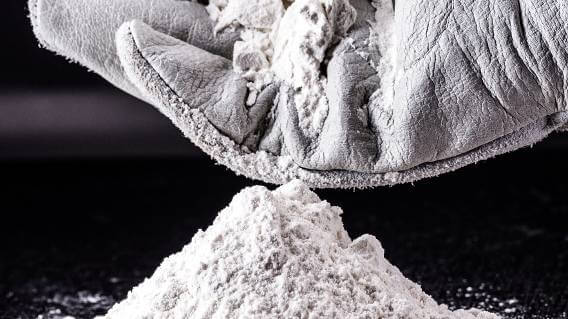Johnson & Johnson Bankruptcy Plan Won’t Halt Industrial Talc Lawsuit

Johnson & Johnson may have used a controversial bankruptcy spinoff to avoid almost 40,000 cosmetic talc lawsuits, but it now must face plaintiffs harmed by industrial talcum powder decades ago.
U.S. federal Judge Michael Kaplan ruled earlier this month that the recent bankruptcy plan halting the majority of cases would not apply to this latest class-action lawsuit.
The ruling in a New Jersey Superior Court stems from a complaint first brought in 1986. A man claimed his lung disease was caused by asbestos exposure linked to contaminated talc at his job at Windsor Minerals, a mine in Vermont owned by Johnson & Johnson.
J&J sold the mine in 1989. The man died in 1994, but his family has reopened the case. They claim new evidence has shown the company was withholding test results and falsifying records, which led to the case being dropped.
Through the 1980s, more than a thousand others filed lawsuits against J&J that met similar ends. The recent ruling is expected to gather many of them in a class-action suit.
Ruling Reopens Talc Legal Claims
Kaplan, who approved J&J’s Chapter 11 bankruptcy filing in February, ruled that the proposed lawsuit was different enough from the cosmetic talc cases that it can move forward.
J&J has long maintained that the talc in its products, both cosmetic and industrial, is free from asbestos, a toxic mineral that can cause serious illnesses, including mesothelioma and ovarian cancers.
Most everyone agrees that talc, one of the world’s softest minerals, is safe by itself but it often is mined near asbestos and can become contaminated.
“We stand by the safety of the talc sold by Windsor Minerals, which was once a Johnson & Johnson subsidiary,” the company said in an emailed statement. “Johnson & Johnson denies the claims being brought forth in this suit, and will defend the case if it proceeds.”
Product testing, which varies widely, has been inconclusive through the years. The U.S. Food and Drug Administration performed a review of cosmetic talc products in 2020 and found traces of toxic asbestos in nine of 52 products.
Separating Cosmetic and Industrial Talc Lawsuits
In recent years, Johnson & Johnson, which is one of America’s richest companies, has both won and lost legal cases brought against it involving asbestos-contaminated talc.
The majority of talc cases involve women and cosmetic powders, including the iconic Johnson’s Baby Powder. The use of talc in the baby powder was discontinued in the U.S. and Canada in 2020.
Settlements and verdicts from Johnson & Johnson lawsuits have cost the company an estimated $4.5 billion over the last several years. It first explored the bankruptcy strategy after the U.S. Supreme Court refused to review a $2.1 billion judgement in Missouri that went to 20 women who claimed their ovarian cancer had been caused by various talc products.
Prompted by the tens of thousands of lawsuits, J&J created a new entity called LTL Management LLC, which was designed solely to absorb its talc liabilities. That company immediately filed for bankruptcy, putting a hold on all lawsuits.
J&J Saving Big with Talc Bankruptcy Spinoff
J&J is the largest pharmaceutical company in the world, leading to outrage from plaintiffs at its ability to declare bankruptcy under a Texas law aimed at protecting corporate interests.
LTL Management listed its worth at $10 billion, along with $10 billion in liabilities, according to recent court records. Johnson & Johnson said the subsidiary will have $2 billion set aside to settle all talc claims.
The bankruptcy filing is designed to pressure claimants to accept lower settlements and avoid any excessive payouts. It also would speed up the process of compensating those who were injured.
In the most recent court proceedings, J&J contended that the allegations within the latest class-action suit were much like those in the cosmetic talc cases and should be lumped into the bankruptcy proceeding.
By contrast, the recent lawsuit brings claims of fraudulent legal testimony on behalf of J&J and little mention about consumer talc, which was a major reason the cases will be allowed to proceed.